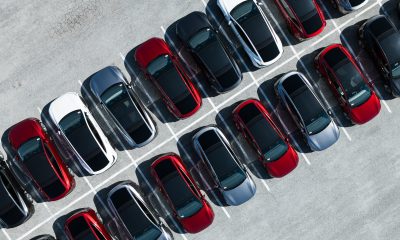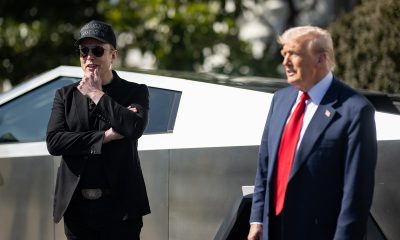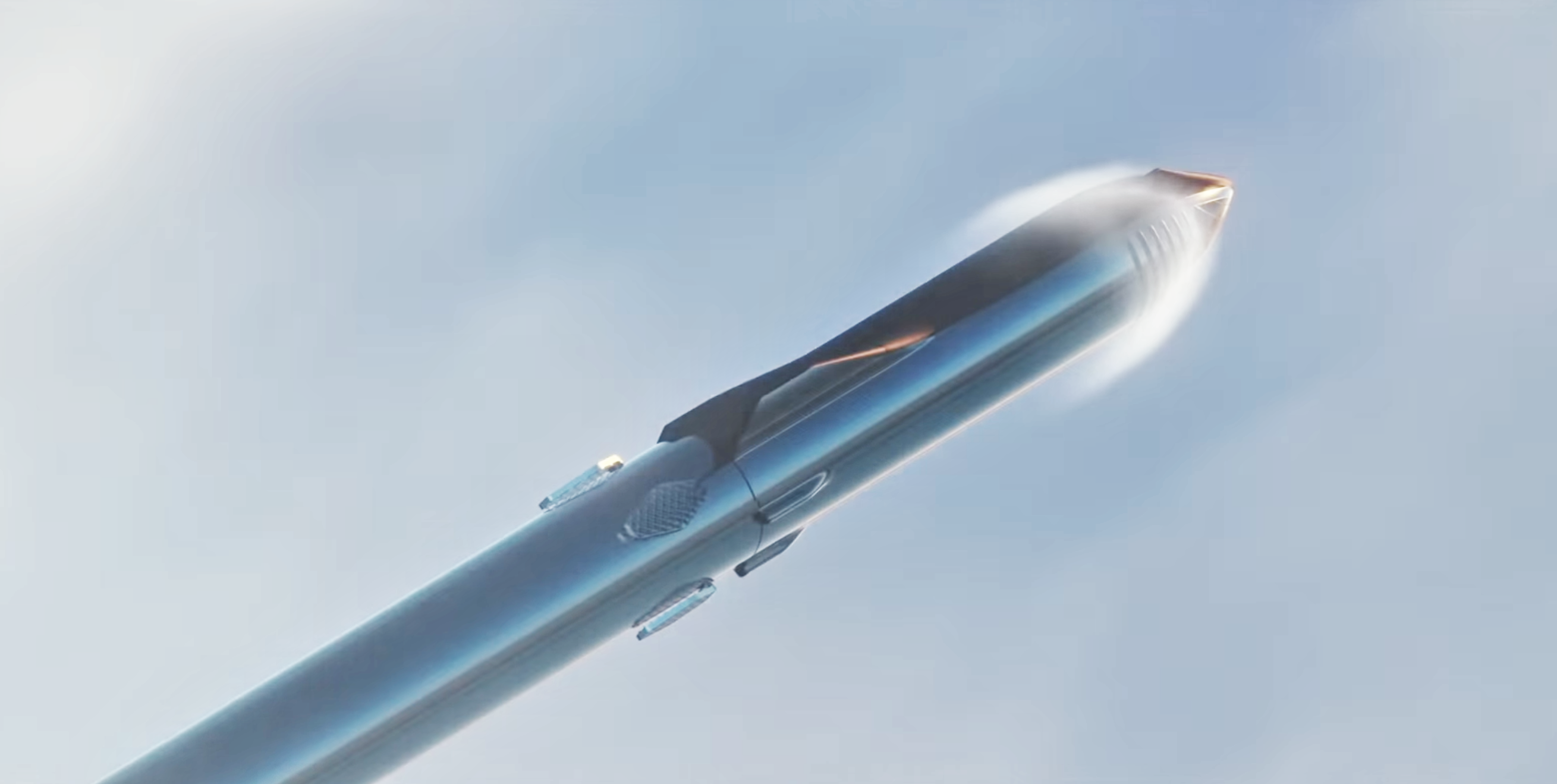

News
SpaceX CEO Elon Musk lays out Starship’s path to orbit with sights set on 2020 debut
Speaking on September 28th, SpaceX CEO Elon Musk sketched out a fairly detailed picture of Starship’s path to orbit, from the first flight of the first full-scale prototype to the spacecraft’s inaugural orbital launch atop a Super Heavy booster.
Incredibly, Musk was persistent with claims that he has challenged SpaceX’s Starship teams to conduct the next-generation rocket’s first orbital launch within six months, drawing a line in the sand around April 1st, 2020 (?). How, then, does the SpaceX CEO foresee the next year or so playing out?
A whole lotta ‘Ships
As is the company’s signature, Musk confirmed that the Starship development program will continue to be highly distributed, hardware-rich, and focused on an iterative and continuous process of learning by doing. Starhopper is perhaps the best emblem of this methodology, defying almost every conceivable aerospace industry norm to successfully build and repeatedly fly what was essentially a rocket built outside by water tower welders.
Starhopper may have scarcely been meant to fly at all, serving almost entirely as a proof of concept and learning experience, but Musk strongly suggested that future Starship prototypes will replicate its highly iterative, learning-on-the-job approach to development. In short, much like SpaceX has nearly completed Starship Mk1 (and Mk2) from scratch in less than six months, SpaceX’s development strategy involves building a lot of Starship prototypes as quickly as possible.
Specifically, Elon Musk stated – in his opinion – that SpaceX will likely attempt its first orbital Starship-Super Heavy launch immediately after Starship Mk1’s first flight attempt, a suborbital launch to ~20 km (12.5 mi). Assuming that test – far more critical than any of Starhopper’s travails – is successful, the very next Starship flight could be an orbital launch attempt.
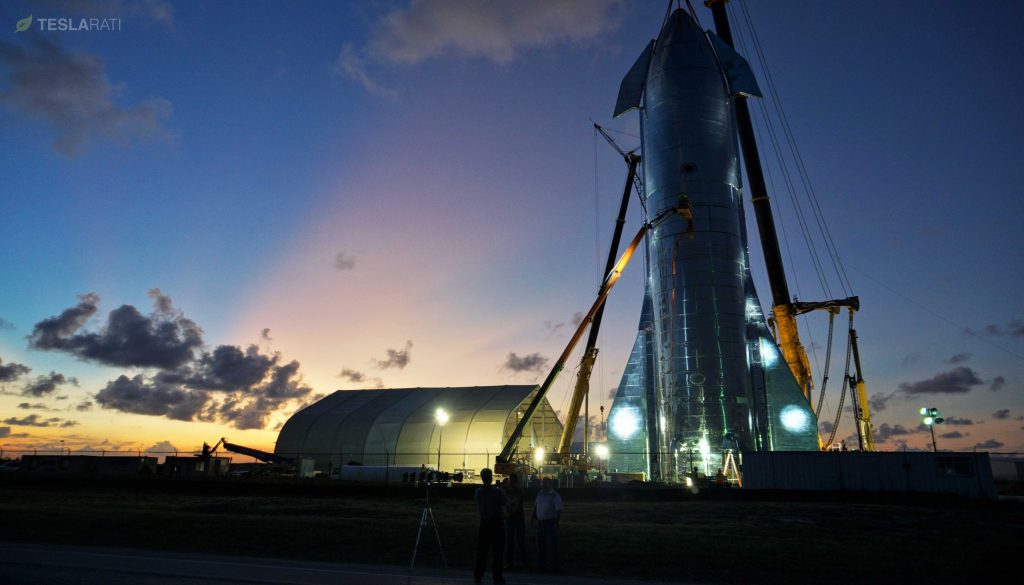
First and foremost, Musk was pretty clear that the rough schedule he laid out was a “stream of consciousness”. Indeed, the eccentric CEO contradicted (or updated) himself over the course of answering the same question, stating that “[SpaceX] would fly to orbit with [Starship] Mk3” before saying that that it would actually be “Mk4 or Mk5”. Musk is still undoubtedly set on announcing gobsmackingly ambitious schedules for his projects, but it’s worth noting just how serious he seemed while discussing Starship’s development timeline.
He noted that SpaceX will likely “have [Starship] Mk2 built within a couple of months – or less”, referring to the second prototype currently in the late stages of integration at the company’s similar Cocoa, FL facilities. Additionally, Musk indicated that Starship Mk3 – yet to begin construction in Boca Chica – could be finished as few three months from now (around the start of 2020), with Starship Mk4 – to be built in Florida – could be just one to two months behind (NET Feb/March 2020). Correcting his previous statement, whether intentional or not, Musk also added that SpaceX’s first orbital Starship launch attempt would likely involve either the Mk4 or Mk5 prototype and occur “less than six months from now”.
As a slight consolation to the eyewateringly ambitious timeline he laid out, Musk qualified his “six months to orbit” target by acknowledging that it would only be achievable “provided the rate of design and manufacturing improvement continues to be exponential”. If that remains the case, as he believes it has been over the last six or so months, then SpaceX could be ready for the first orbital Starship launch attempt as few as 6-9 months from now – sometime in the first half of 2020.
A lot will undoubtedly have to go very right for that to remain anywhere within the realm of plausibility. This includes the rapid maturation of Starship’s Raptor engine and vacuum-optimized variant, the successful completion of Starship Mk1’s 20km flight test, the assembly and static fire of the first Super Heavy booster(s), the construction of brand new orbital launch facilities, and the FAA’s approval of all aforementioned flight operations.
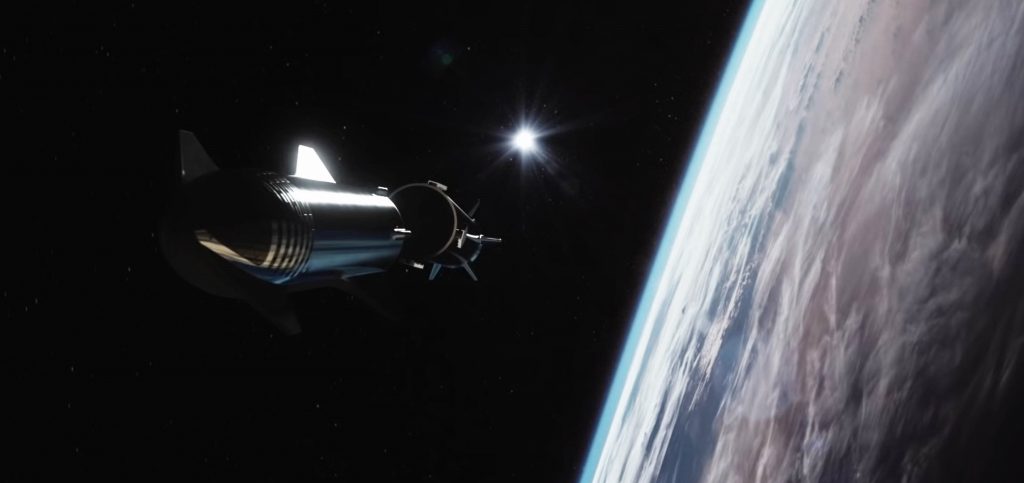
Needless to say, the odds are heavily stacked against Musk’s goal of reaching orbit within six months. There is undoubtedly a chance that SpaceX can pull it off, even if success would essentially involve constructing a bridge while driving off a cliff. However, the most important thing to note is that even if Elon Musk is a factor of 1.5, 2, 3, or even 4 times off and Starship reaches orbit for the first time 12 or 18 or 24 months from now, it will still have been an incredibly brisk period of development for a rocket as large, high-performance, and ambitious as Starship/Super Heavy.
It should also be made clear that, while it’s utterly beyond the present capabilities of NASA and other space agencies/companies of the 21st century, Saturn V went from paper to its first orbital launch in just five years. Depending on how one perceives Starship development, it could be said that SpaceX began development – particularly marked by Raptor engine prototype testing – as early as 2016. Suffice it to say that it’s far from impossible that Starship’s first orbital launch will happen next year, even if the challenges SpaceX faces are immense.
Check out Teslarati’s Marketplace! We offer Tesla accessories, including for the Tesla Cybertruck and Tesla Model 3.
News
Tesla UK sales see 14% year-over-year rebound in June: SMMT data
The SMMT stated that Tesla sales grew 14% year-over-year to 7,719 units in June 2025.
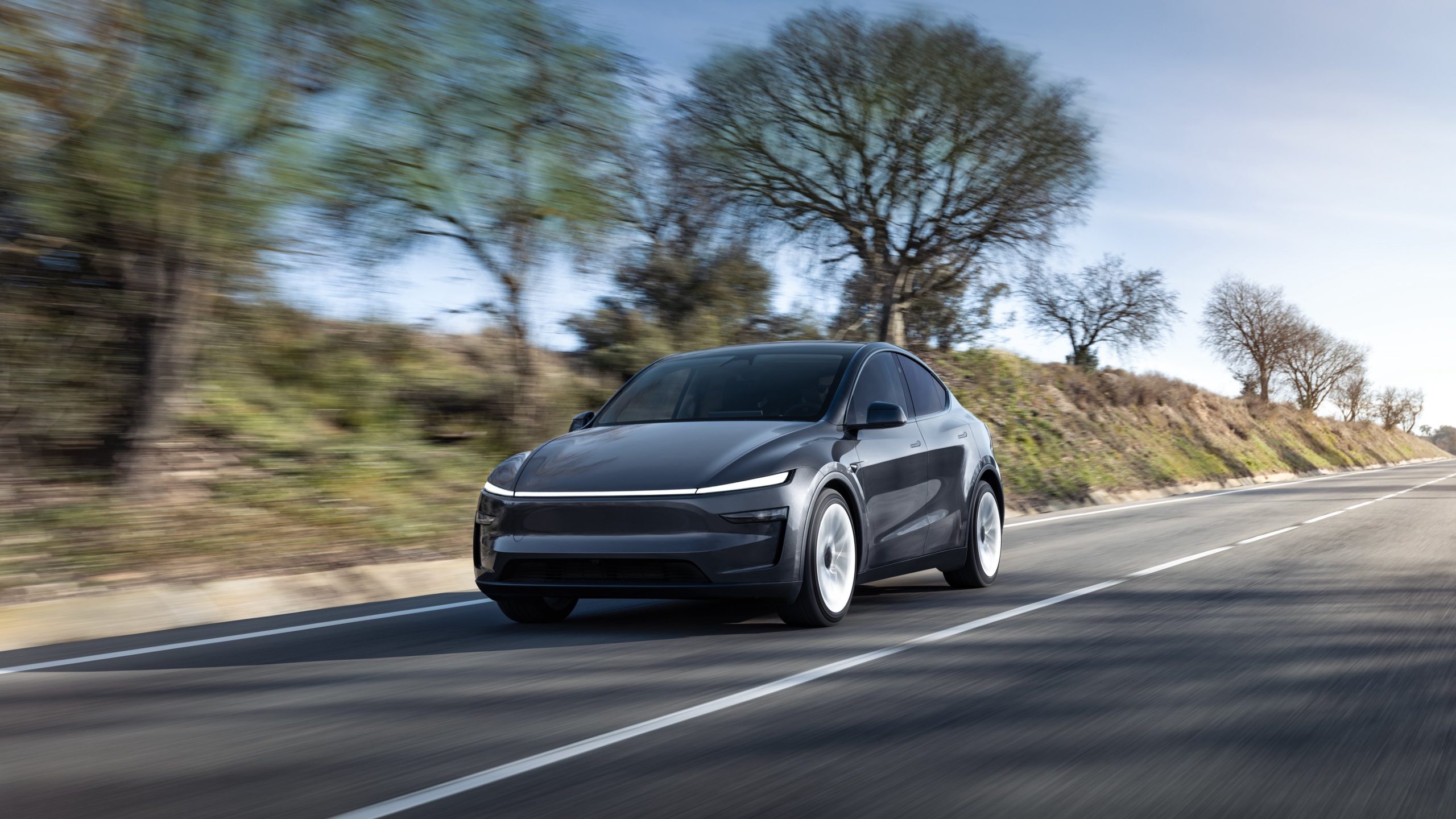
Tesla’s sales in the United Kingdom rose in June, climbing 14% year-over-year to 7,719 units, as per data from the Society of Motor Manufacturers and Traders (SMMT). The spike in the company’s sales coincided with the first deliveries of the updated Model Y last month.
Model Y deliveries support Tesla’s UK recovery
Tesla’s June performance marked one of its strongest months in the UK so far this year, with new Model Y deliveries contributing significantly to the company’s momentum.
While the SMMT listed Tesla with 7,719 deliveries in June, independent data from New AutoMotive suggested that the electric vehicle maker registered 7,891 units during the month instead. However, year-to-date figures for Tesla remain 2% down compared to 2024, as per a report from Reuters.
While Tesla made a strong showing in June, rivals are also growing. Chinese automaker BYD saw UK sales rise nearly fourfold to 2,498 units, while Ford posted the highest EV growth among major automakers, with a more than fourfold increase in the first half of 2025.
Overall, the UK’s battery electric vehicle (BEV) demand surged 39% to to 47,354 units last month, helping push total new car sales in the UK to 191,316 units, up 6.7% from the same period in 2024.
EV adoption accelerates, but concerns linger
June marked the best month for UK car sales since 2019, though the SMMT cautioned that growth in the electric vehicle sector remains heavily dependent on discounting and support programs. Still, one in four new vehicle buyers in June chose a battery electric vehicle.
SMMT Chief Executive Mike Hawes noted that despite strong BEV demand, sales levels are still below regulatory targets. “Further growth in sales, and the sector will rely on increased and improved charging facilities to boost mainstream electric vehicle adoption,” Hawes stated.
Also taking effect this week was a new US-UK trade deal, which lowers tariffs on UK car exports to the United States from 27.5% to 10%. The agreement could benefit UK-based EV producers aiming to expand across the country.
News
Tesla Model 3 ranks as the safest new car in Europe for 2025, per Euro NCAP tests
Despite being on the market longer than many of its rivals, the Tesla Model 3 continues to set the bar for vehicle safety.

The Tesla Model 3 has been named the safest new car on sale in 2025, according to the latest results from the Euro NCAP. Among 20 newly tested vehicles, the Model 3 emerged at the top of the list, scoring an impressive 359 out of 400 possible points across all major safety categories.
Tesla Model 3’s safety systems
Despite being on the market longer than many of its rivals, the Tesla Model 3 continues to set the bar for vehicle safety. Under Euro NCAP’s stricter 2025 testing protocols, the electric sedan earned 90% for adult occupant protection, 93% for child occupant protection, 89% for pedestrian protection, and 87% for its Safety Assist systems.
The updated Model 3 received particular praise for its advanced driver assistance features, including Tesla’s autonomous emergency braking (AEB) system, which performed well across various test scenarios. Its Intelligent Speed Assistance and child presence detection system were cited as noteworthy features as well, as per a WhatCar report.
Other notable safety features include the Model 3’s pedestrian-friendly pop-up hood and robust crash protection for both front and side collisions. Euro NCAP also highlighted the Model 3’s ability to detect vulnerable road users during complex maneuvers, such as turning across oncoming traffic.
Euro NCAP’s Autopilot caution
While the Model 3’s safety scores were impressive across the board, Euro NCAP did raise concerns about driver expectations of Tesla’s Autopilot system. The organization warned that some owners may overestimate the system’s capabilities, potentially leading to misuse or inattention behind the wheel. Even so, the Model 3 remained the highest-scoring vehicle tested under Euro NCAP’s updated criteria this year.
The Euro NCAP’s concerns are also quite interesting because Tesla’s Full Self-Driving (FSD) Supervised, which is arguably the company’s most robust safety suite, is not allowed for public rollout in Europe yet. FSD Supervised would allow the Model 3 to navigate inner city streets with only minimal human supervision.
Other top scorers included the Volkswagen ID.7, Polestar 3, and Geely EX5, but none matched the Model 3’s total score or consistency across categories. A total of 14 out of 20 newly tested cars earned five stars, while several models, including the Kia EV3, MG ZS, and Renault 5, fell short of the top rating.
Elon Musk
Why Tesla’s Q3 could be one of its biggest quarters in history
Tesla could stand to benefit from the removal of the $7,500 EV tax credit at the end of Q3.

Tesla has gotten off to a slow start in 2025, as the first half of the year has not been one to remember from a delivery perspective.
However, Q3 could end up being one of the best the company has had in history, with the United States potentially being a major contributor to what might reverse a slow start to the year.
Earlier today, the United States’ House of Representatives officially passed President Trump’s “Big Beautiful Bill,” after it made its way through the Senate earlier this week. The bill will head to President Trump, as he looks to sign it before his July 4 deadline.
The Bill will effectively bring closure to the $7,500 EV tax credit, which will end on September 30, 2025. This means, over the next three months in the United States, those who are looking to buy an EV will have their last chance to take advantage of the credit. EVs will then be, for most people, $7,500 more expensive, in essence.
The tax credit is available to any single filer who makes under $150,000 per year, $225,000 a year to a head of household, and $300,000 to couples filing jointly.
Ending the tax credit was expected with the Trump administration, as his policies have leaned significantly toward reliance on fossil fuels, ending what he calls an “EV mandate.” He has used this phrase several times in disagreements with Tesla CEO Elon Musk.
Nevertheless, those who have been on the fence about buying a Tesla, or any EV, for that matter, will have some decisions to make in the next three months. While all companies will stand to benefit from this time crunch, Tesla could be the true winner because of its sheer volume.
If things are done correctly, meaning if Tesla can also offer incentives like 0% APR, special pricing on leasing or financing, or other advantages (like free Red, White, and Blue for a short period of time in celebration of Independence Day), it could see some real volume in sales this quarter.
You can now buy a Tesla in Red, White, and Blue for free until July 14 https://t.co/iAwhaRFOH0
— TESLARATI (@Teslarati) July 3, 2025
Tesla is just a shade under 721,000 deliveries for the year, so it’s on pace for roughly 1.4 million for 2025. This would be a decrease from the 1.8 million cars it delivered in each of the last two years. Traditionally, the second half of the year has produced Tesla’s strongest quarters. Its top three quarters in terms of deliveries are Q4 2024 with 495,570 vehicles, Q4 2023 with 484,507 vehicles, and Q3 2024 with 462,890 vehicles.
-

 Elon Musk4 days ago
Elon Musk4 days agoTesla investors will be shocked by Jim Cramer’s latest assessment
-

 News1 week ago
News1 week agoTesla Robotaxi’s biggest challenge seems to be this one thing
-

 Elon Musk2 weeks ago
Elon Musk2 weeks agoFirst Look at Tesla’s Robotaxi App: features, design, and more
-

 News2 weeks ago
News2 weeks agoSpaceX and Elon Musk share insights on Starship Ship 36’s RUD
-

 News2 weeks ago
News2 weeks agoWatch Tesla’s first driverless public Robotaxi rides in Texas
-

 News1 week ago
News1 week agoWatch the first true Tesla Robotaxi intervention by safety monitor
-

 News2 weeks ago
News2 weeks agoTesla has started rolling out initial round of Robotaxi invites
-
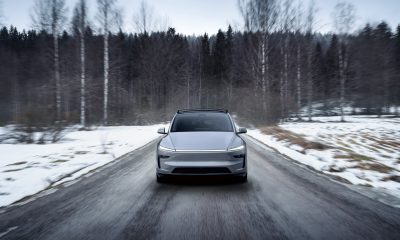
 Elon Musk2 weeks ago
Elon Musk2 weeks agoTesla to launch in India in July with vehicles already arriving: report






